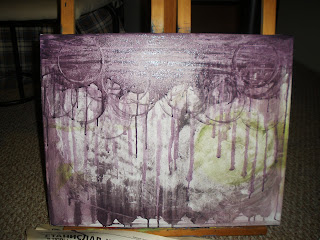
Any time you spend money for a product or service you are having a customer experience. Whether that be the book you ordered online through amazon.com or the cappuccino you bought at your local coffee shop. Each experience is different and if the experience is good, it usually leads you to come back, in effect building brand/company loyalty. There’s a reason why the ipod and iphone are such highly demanded products. Though they do offer several key features, are they really superior to other mp3 players and smartphones? And how come when my dad bought me a brand new HP laptop, I felt a slight sense of disappointment that it wasn’t a mac?

When you buy TOMS shoes what are you really buying? Comfort? Style? Durability? How about recognition, customer service, connection to a network of TOMS shoe wearers, a sense of pride that you just gave a pair of shoes to a child in need, connection to a child, connection to a charity, connection to a cause. You are buying an experience. In class we talked about Strategic Experiential Modules, which are types of experiences a consumer can have. These include: Sensory (Sense), Emotional (Feel), Intellectual/Cognitive (Think), Physical/Behavioral (Act), Relational (Relate). What keeps these consumers loyal to one brand or one store lies not so much in the features of the products or services as much as the holistic experiences they provide.
As a daily consumer I have had all sorts of experiences with stores, products, company representatives, services, etc. One of the best experiences I’ve ever had as a customer was at Visual Changes, a haircutting salon in Katy, TX. Before I even arrived at the salon, I visited their website which was visually appealing and very customer friendly. I could look up different prices, photos of different hair styles and cuts, and the different levels of haircutters they had available. When I called to book an appointment, the representative was very polite and sounded excited. She helped me decide which haircutter would work best for me based on my need and my budget. Right away, she set up a good emotional experience. I was going into for my appointment with a positive outlook.

When I walked in, the salon itself looked very clean and funky. Lots of lights and good smells coming from the salons. Also, there were a lot of glass windows with people getting their hair done on display; I thought that was visually appealing and intriguing. The layout of the place was cool and while I sat and waited to get shampooed, I flipped through pages of picture books, which got me excited for my haircut. The shampooing process was relaxing and pleasant; definitely appealed to my sensory type of experience. The woman working with me was polite and funny.
In terms of a relational experience, I could really relate to the VC staff and salon in general. I could tell right away that the staff were really cool, young, hip people; lots of them had crazy colored hair and piercings. That’s similar to my personal style and I felt like this place was a good fit for me. I hate those really prim and proper, super-fancy, expensive salons where highlights cost like 100 bucks.
My haircutter, Harold, was a really cool mid-30s Hispanic guy, who was freaking hilarious. I swear, I wanted to ask for his number after our session because I thought he was so damn entertaining. Once again, I felt like I could easily relate to him. He listened to what I wanted and studied the photos I had brought in. At the time I had pretty long hair and I wanted to do something drastic and cut it really short but I was extremely nervous because I had never cut my hair above my shoulders. He helped me decide what kind of style would look best with my hair and calmed me down about the decision.
The haircut itself looked pretty awesome. I was pleasantly surprised. He even blow-dried and straightened my hair for no extra charge (I had paid only for a wash and cut). Here’s a photo of me before and after:
BEFORE:
AFTER:
The end result of my haircut was definitely an emotional and physical experience. I felt excited and happy about the haircut but also VC helped enrich my life. The haircut helped me feel more confident and beautiful and fresh which in effect helped enrich and better my interactions, my work, my social life, etc. The fact that I took a risk and had such a positive experience also helped shape my decision for future similar endeavors. If the experience had been bad, I might have never experimented with my physical appearance again. The VC experience gave me confidence in taking risks and trying new things.












.jpg)
